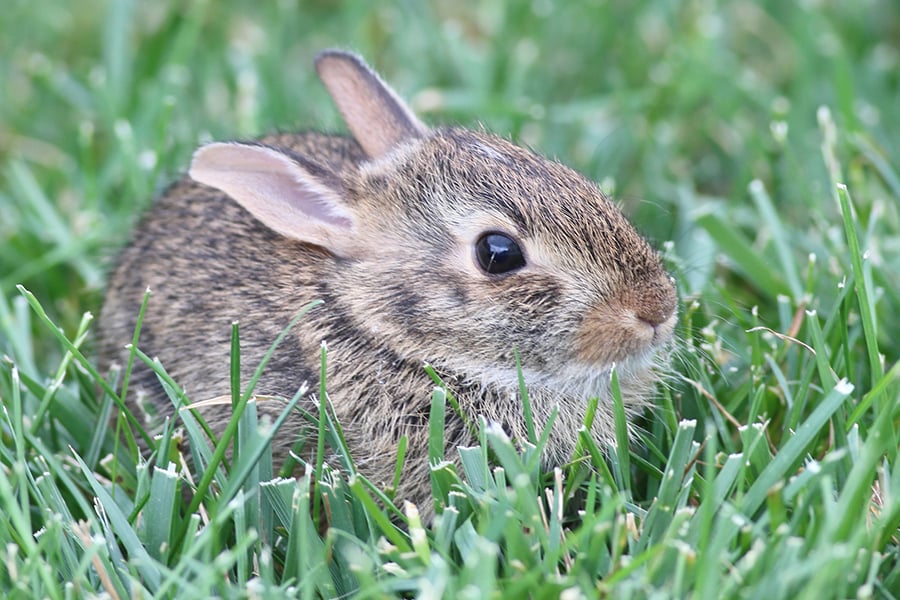I Found a Baby Cottontail. What Should I Do?
If you find a baby cottontail, first call the DuPage Wildlife Conservation Center at 630-942-6200 to determine if the animal truly needs assistance. Recordings provide information after hours, and additional assistance is included on this webpage.
Signs a Baby Cottontail May Need Medical Help
- Obvious bleeding
- Obvious fracture
- Severe head tilt
- Swollen, crusty, and red eyes or obvious eye injury
- Obvious maggots or parasites
What Should I Do if It's Out of Its Nest?
If the cottontail fits the following description, it may be old enough to be on its own.
- Ears up
- Eyes open
- Able to hop
- About 5 inches long

This cottontail is big enough to be on its own.
If the cottontail isn't this developed, you can try to return it to its nest.
- Gently place the young back in the nest. It's okay to handle it with gloved hands. The mother will not reject it.
- Cover the young with any leftover nesting fur and dried grass.
- Leave the nest alone. Frequent activity around the nest can force the mother to abandon it.
You shouldn't expect to see the mother. She only feeds her young once or twice a day and usually at night. Otherwise, she stays away so she doesn't bring attention to the nest. A female can raise an entire litter without ever being seen by people. Eastern cottontails and other young wild animals are not constantly supervised by their parents. They spend much of their time alone or with siblings. Because of this, people should leave the young alone when possible.
If you're still concerned, you can check to see if the mother returns.
- Lightly place string or twigs over the nest in a tac-tac-toe pattern, and leave the nest overnight. If the strings are disturbed in the morning, the mother has likely been there to feed her babies.
- See if the young look generally healthy and are warm and active with rounded bellies. If so, the mother is present.
- If the babies are cold and lethargic with flattened bellies, something may have happened to their mother.